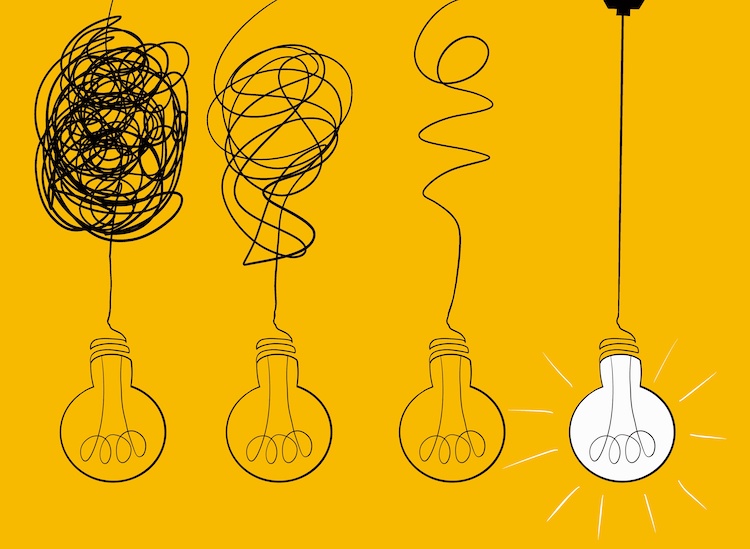Last year, the Centers for Disease Control and Prevention released a stunning statistic: Nearly 71,000 people, it estimates, died of drug overdoses in 2019. The huge increase in deaths is largely due to heroin and powerful synthetic opioids, such as fentanyl. One of the tools being used to fight that wave of deaths is the drug Naloxone. It’s been called the Lazarus drug for its ability to revive people dying from overdoses. This is addressed in a gripping Hidden Brain Podcast episode, “Life, Death and the Lazarus Drug: Confronting America’s Opioid Crisis,” which tries to understand the complex risk-and-benefit calculations involved in opioid use, and why there is still so much we are struggling to understand about addiction.
Much like the opioid crisis, we are also still deeply struggling to understand many things about diversity and inclusion. Data is replete with evidence that D&I strategy, programs and training have not made any meaningful change. Historical findings and social movements of late, in fact, show that those efforts have failed.
D&I seems to elude attempts to gain perspective and consequential progress and has steadily risen as a vexing issue of social consciousness. The onset of COVID-19 only served as a trigger for heightened awareness and critical mass of global proportions. So much so that nearly all sectors — government, corporate, education and nonprofit — are scrambling to confront this crisis-level social call to action. The go-to solution remains futilely constant — D&I policies, training programs, heterogeneous hiring and adding a new D&I role to revive an organization from the death of an ineffectual D&I overdose. This is evidenced by a 113 percent increase in the number of executives that hold D&I titles in organizations.
Given the low to zero returns over the past 60 years and nearly $8 billion USD in annual spend on conventional D&I policies, programs, practices and measures of realizing a more diverse and inclusive workplace top to bottom, few have a grasp on the problem or a credible remedy. There is a pressing need to reverse the effects of ineffectual D&I initiatives. A viable remedy for meaningful change has yet to emerge, though a deeper examination of the failures may point to bionic learning having promising properties as the D&I “Lazarus drug.” This is an alternate line of inquiry for learning and HR practitioners to consider, especially given that one of the priorities of the newly elected U.S. administration is addressing D&I inequality.
While there is no textbook answer, we know what has not worked. Prospective employees, customers and the general public are demanding meaningful progress in the D&I realm. “Leading companies in multiple industries are combining the strengths of humans and technology to create superhuman — bionic — capabilities.” This observation from The Bionic Company offers a clear sense of direction. Why not combine lessons learned, mixed reality and a system of reinforcement to create a comprehensive immersive human experience — or bionic learning — to shift mindset and outcomes?
Three enablers are the nuclei for organizations to operationalize bionic learning and fuel progress toward meaningful outcomes: after action review, mixed realityEmpathy Scenario and positive reinforcement.
After action review
These lessons are replete from the perennial failure of D&I initiatives over the past 60 years. Imagine a method for harvesting lessons from one program or initiative and sowing them in others to continuously iterate and improve. This is a method created by the U.S. Army but popularized by businesses such as GE, British Petroleum, Colgate-Palmolive, Harley-Davidson and others to glean best practices, identify mistakes and build a culture of accountability. The AAR as an enabler puts learning “in the thick of it.” It is a means of forensically analyzing the D&I organizational ecosystem top to bottom and truly treating every aspect as an opportunity for learning, what and why things happened, how to think differently and how things can be done better.
Mixed RealityEmpathy Scenario (MxRES)
“You can’t understand someone until you’ve walked a mile in their shoes” is a well-known anonymous quote. However, it clearly indicates the importance of empathy and the meaningfulness of feeling with the other’s heart and seeing with the other’s eyes. One of the habitual failings of D&I strategies is rolling out training — a time-bound event as a credible intervention to overcome issues of racism, prejudice, bias and discrimination. It does not attend to systemic and structural issues that are perpetuated in the workplace from top to bottom, and, above all, it has not evidenced its ability to impart empathy nor behavior change.
Imagine a method of being able to replicate sensory experiences (virtual taste, sight, smell, sound and touch), where you can introduce every individual into a branching scenario that presents them with real-world options and consequences. This is a method of merging real and virtual worlds to produce empathy branching scenario environments, visualizations and rubrics. MxRES as an enabler fuses physical and digital objects that interact in real time. Instead of individuals in your organization being passive recipients of information presented to them via conventional training, they must actively participate and engage in a range of real-world consequences to their actions and decisions. This presents instant feedback to analyze results, improve behavior and serve as a catalyst to amend the culture and organizational structure. It’s a promising approach to fast-track both reasoning abilities and complex procedural learning and stoke users’ sense of connection — empathizing with nature thus could potentially make humans better agents of it and, by extension, others.
Positive reinforcement
All human behavior is learned; therefore, it can be unlearned and replaced with new behaviors under instrumental conditions. Instrumental conditioning, also known as operant conditioning, is a learning process introduced in 1957 by renowned psychologist B.F. Skinner’s influential experimental work. Instrumental conditioning, reinforcement or punishment is a practice used to shape the likelihood that a behavior choice will be repeated. Patricia Devine, a social psychologist, took it a step further and found individuals can suspend their feelings and consciously choose not to respond with prejudicial behavior.
Positive reinforcement as an enabler provides consequences once certain responses or behaviors occur — particularly those that are desired. Kendra Cherry, a psychosocial rehabilitation specialist offers this as an opportunity to present a favorable outcome, event or reward after a desired response or behavior. This reinforces that specific choice, increasing the chance it will be observable in the future. Once the standards are known and association between desired choices and consequences are established, to increase a higher probability of success the standards must be unwaveringly reinforced without impunity. Renowned poet Maya Angelou once offered, “Do the best you can until you know better. Then when you know better, do better.”
Let’s face it: The shift in global demographics, prevailing social movements, political undertows and customer demands are a cyclic phenomenon. Likewise, with six decades of data, the failure of D&I initiatives is perennial. Like success, failure has left clear and present signposts that learning can be a powerful force if we give pause to harvest and harness it. It can be transcendent if we simply pay attention to what we are paying attention to. Bionic learning may well be the promising Lazarus drug to revive the overdose of ineffectual D&I strategies and add new value that reflects a higher-level social conscience of not only knowing better, but doing better.















